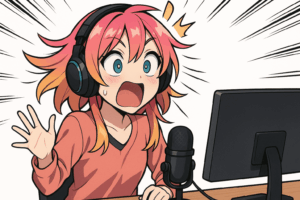In the world of 3D modeling, particularly for low poly characters, understanding file formats is crucial for efficient workflow and optimal results. Among the most common file formats you’ll encounter are OBJ and FBX. Both are vital in creating and managing low poly character models, but they each serve different purposes and have unique strengths. This blog will delve into these two formats, providing insights into their differences, uses, and how they integrate with various 3D software such as Blender and 3ds Max.
What Are OBJ and FBX Files?
OBJ and FBX are file formats used to store 3D models, including low poly character models. These formats are essential for game development, animation, and virtual reality projects. Let’s break down what each format entails:
- The OBJ (Wavefront Object) format stores 3D geometry data, such as vertices, edges, and faces, in a simple, text-based format. Many 3D applications widely support it, thanks to its ease of use and compatibility. Users can easily download and import OBJ files into programs like Blender, making them a popular choice for low poly models. People often use the OBJ format for static low poly characters, including both male and female models, and frequently encounter it in obj to FBX conversion processes.
- Autodesk developed the FBX (Filmbox) format to support a wide range of features, including animations, textures, and complex hierarchies. This more complex format is ideal for intricate character models, such as those with animations and rigging. Artists commonly use FBX files with software like 3ds Max and Maya, and they are renowned for their robustness in preserving animation data. The FBX format also fits seamlessly with fbx obj workflows, making it valuable for projects involving dynamic content, like animated female characters.
Using OBJ – FBX for Low Poly Characters
When working with low poly character models, the choice between FBX – OBJ can significantly impact your workflow:
OBJ Files
OBJ files are easy to work with, making them a good choice for low poly character models. Many 3D software programs, including Blender and 3ds Max, widely support them. If you’re primarily focusing on the static geometry of your low poly character, OBJ files are an excellent choice. Additionally, maintaining a detailed log of your file formats can help streamline your workflow and ensure you are using the right formats for your specific needs.
You can download OBJ files from various online repositories and easily integrate them into your projects. They are particularly useful when you need a quick, compatible format for basic character models without additional features like animation.
FBX Files
FBX files offer more advanced features compared to OBJ, including support for animations and rigging. If your low poly character models involve animations or require rigging, FBX is the better choice. Its support for complex features makes it ideal for animating characters or integrating them into dynamic scenes.
Major 3D software like Blender and 3ds Max support FBX files well. However, because of their complexity, they can sometimes require more processing power and may not always be as straightforward to work with as OBJ files. If your project demands intricate animation or rigging, FBX will provide the necessary functionality.
Choosing the Right Format
Deciding between OBJ and FBX for your low poly character models depends on your project’s needs:
- For Static Models: If your focus is on static low poly character models, OBJ files offer simplicity and ease of use. They are perfect for basic character geometry and are widely compatible with most 3D software.
- For Animated Models: If your low poly character models involve animations or require rigging, FBX is the better choice. It supports advanced features that preserve all aspects of your character model, including movements and rig setups.

Working with Blender and 3ds Max
Both Blender and 3ds Max support OBJ and FBX files, making them versatile tools for working with low poly character models.
- Blender: Blender is a powerful, open-source 3D software that handles both OBJ and FBX formats efficiently. Whether you’re importing a low poly character model or exporting it for use in other applications, Blender provides robust tools and features to manage these file types.
- 3ds Max: 3ds Max, developed by Autodesk, offers extensive support for FBX files, making it an excellent choice for more complex projects involving low poly characters with animations. It also supports OBJ files, but its advanced features shine with FBX.
Conclusion
Understanding the differences between OBJ and FBX files is crucial for effectively managing low poly character models. Whether you’re working with basic static character models or more complex animated characters, selecting the right format will streamline your workflow and ensure compatibility with your 3D software. OBJ files offer simplicity and broad compatibility, while FBX files provide advanced features and robust support for animations. By choosing the right format and utilizing tools like Blender and 3ds Max, you can achieve optimal results in your 3D projects.
Ready to create stunning low poly characters in both OBJ and FBX formats? Visit 3DAiLY for expert tools and resources that will help you bring your character models to life. Whether you’re starting a new project or refining an existing one, 3DAiLY provides everything you need to succeed in the world of 3D modeling.



